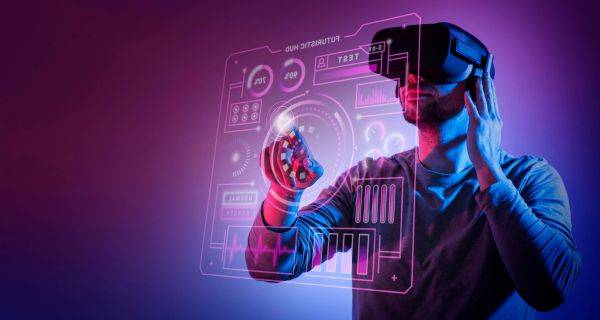info@gladsme.in
+91.8891968718
Unlocking the Future: An Introduction to Spatial Computing
Unlocking the Future: An Introduction to Spatial Computing

Unlocking the Future: An Introduction to Spatial Computing
In the rapidly evolving landscape of technology, spatial computing stands out as a groundbreaking field that promises to revolutionize the way we interact with the digital world. But what exactly is spatial computing, and why is it poised to transform industries and daily life? In this blog post, we'll explore the fundamentals of spatial computing, its applications, and its potential impact on the future.
What is Spatial Computing?
Spatial computing refers to the digital technology that brings together the physical and digital worlds through the use of 3D environments, augmented reality (AR), virtual reality (VR), and mixed reality (MR). By leveraging sensors, cameras, and advanced algorithms, spatial computing enables devices to understand and interact with the physical space around them. This technology allows for immersive experiences where digital information can be overlaid onto the real world, creating seamless interactions between users and their environments.
Key Components of Spatial Computing
Augmented Reality (AR): Enhances the real-world environment by overlaying digital information, such as images, videos, or 3D models, onto a user's view of the physical world. AR applications can be experienced through smartphones, tablets, or AR glasses.
Virtual Reality (VR): Creates entirely digital environments that users can explore and interact with, typically through VR headsets. VR is commonly used in gaming, training simulations, and virtual tours.
Mixed Reality (MR): Blends the physical and digital worlds more intricately than AR, allowing for interactions between real and virtual objects. MR requires more advanced hardware, such as Microsoft HoloLens, to deliver immersive experiences.
3D Mapping and Spatial Awareness: Utilizes sensors and cameras to create detailed maps of physical environments. This data is crucial for enabling devices to understand spatial relationships and navigate spaces accurately.
Applications of Spatial Computing
Spatial computing is already making significant impacts across various industries:
Healthcare: Surgeons use AR to visualize complex procedures, while VR provides immersive training environments for medical students.
Education: Interactive 3D models and VR experiences enhance learning by making abstract concepts tangible.
Retail: AR allows customers to try on clothes or preview furniture in their homes before making a purchase.
Manufacturing: MR enables engineers to visualize and interact with prototypes, streamlining the design process.
Entertainment: VR games and AR experiences provide new levels of immersion and engagement for users.
The Future of Spatial Computing
The potential of spatial computing extends far beyond current applications. As technology advances, we can expect even more innovative uses and transformative impacts. Future developments may include:
Smart Cities: Enhanced spatial awareness can optimize urban planning, traffic management, and public safety.
Workplace Collaboration: Virtual workspaces could become the norm, allowing teams to collaborate in 3D environments regardless of physical location.
Personalized Experiences: Spatial computing can create tailored experiences based on users' preferences and behaviors, enhancing everything from shopping to travel.
Spatial computing is an exciting frontier in the tech world, with the potential to change how we interact with both the digital and physical realms. As we continue to explore and develop this technology, the possibilities are virtually limitless. Whether you're a tech enthusiast, a professional in a related field, or simply curious about the future, keeping an eye on the advancements in spatial computing is sure to be a fascinating journey.
Related Blogs

The Importance of Data Structures in Software Development
Read More...
Exploring Machine Learning Algorithms: A Beginner's Guide
Read More...
The Evolution of Programming Languages: From Assembly to Rust
Read More...
Understanding Big O Notation: A Guide for Developers
Read More...Subscribe for our Newsletter
Subscribe to elevate your software game! Stay updated on the latest trends, coding insights, and exclusive promotions with our newsletter.
